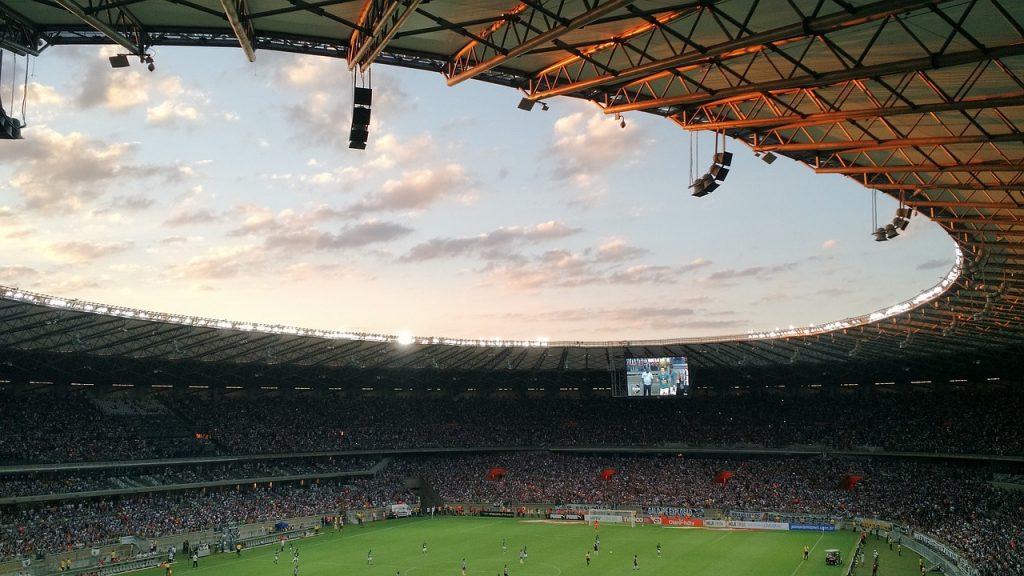The World Cup opening ceremony 2018 kicked off under the panoramic canopy of the Luzhniki Stadium; a 15,000-tonne construction supported by seventy-two discrete steel pillars. This monolithic building is Russia’s national stadium with a maximum seating capacity of 81,000 spectators. The largest stadium capacity in the world belongs to the Rungrado 1st of May Stadium in Pyongyang with its spectacular scalloped roof design comprised of roughly 11,000 tonnes of steel and seating for up to 150,000 people. This sense of architectural spectacle and capacity is underlined by strict material requirements.
Substantial amounts of concrete and steel products are required to fabricate the extravagant details and the infrastructural necessities of the world’s football stadia. This article will explore some of the common steel products used in stadium design and construction, with recognisable examples from across the world of football:
Steel Products in Football Stadia Construction
When designing a national sporting venue, the primary concerns are spectator safety and enjoyment, capacity, and visual impact. This manifold of requirements is typically serviced by established industry materials capable of providing outstanding stability under extreme mechanical stress.
Steel products are used to fabricate the structural basis of the stadium, providing the framework for the deep foundation system. Vertical pilings are drilled or driven into the ground to support the facility’s superstructure, transferring the building load into the surface of the earth. These piling depths and material volumes vary depending upon the scale of the project. The New Wembley Stadium, for example, used four thousand separate steel piles to form the foundations, anchoring the facility at depths of up to 35 meters. This mammoth project required 23,000-tonnes of steel products before it was fully completed from the foundations to its distinctive arch.
After the foundations of a stadium are laid, the groundwork and structural frame of the stadium must be erected to support the grandstand terraces. These are typically arranged using common steel products such as structural beams, columns, and reinforcing mesh. Concrete typically forms the terrace surface material and much of the bulk of the stadium’s superstructure. Galvanised steel sheets and other robust steel products are used in conjunction with concrete for the internal infrastructure, which will regularly sustain substantial amounts of pedestrian traffic of tens of thousands of visitors in a single day.
FIFA has established several requirements for stadiums hosting World Cup matches, including a minimum net seating capacity of 40,000 spectators. This presented a unique challenge for Russia and the Ekaterinburg Arena, which did not initially meet FIFA’s requirements to host a World Cup match. The novel solution to this issue was to erect a temporary 45-meter terrace that projected out of the arena, using an innovative array of composite steel products to form the structure.
The final aspect of a stadium’s design is typically the roof or canopy. Conventional arena roofing designs include king truss and cantilevered designs, but conventionality is rarely at the forefront of national stadium construction nowadays. Arena designs are increasingly using unique canopy structures to present a sense of character to the thousands of tourists and fans that arrive year-round, from the distinctive conch shell design of the Fisht Stadium in Sochi to New Wembley. New Wembley Stadium’s fantastic arch structure is a 134-meter construction boasting the accolade of longest single-span structure on earth.
Steel Products from Masteel
Masteel is a global supplier of steel products for a broad range of industries. We provide robust material solutions for some of the most demanding industrial applications worldwide, including unique construction requirements.
If you would like any more information about our steel products, please do not hesitate to contact us.

